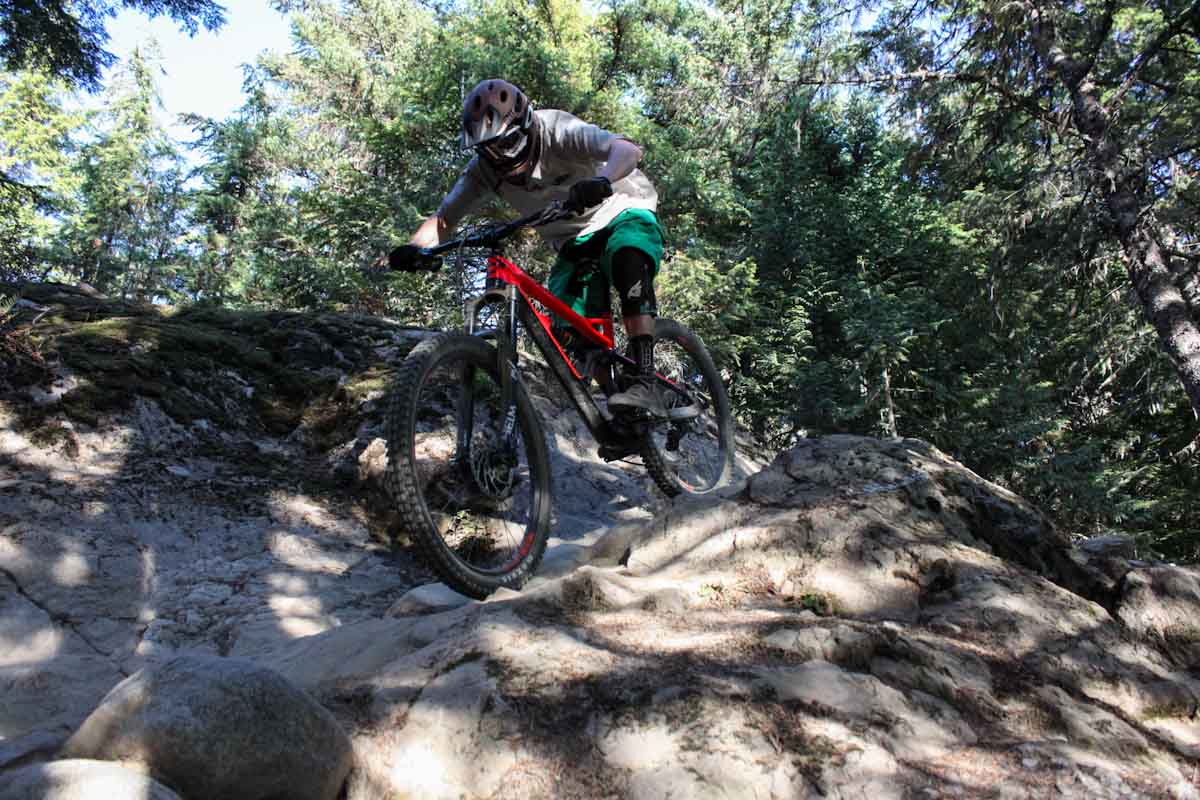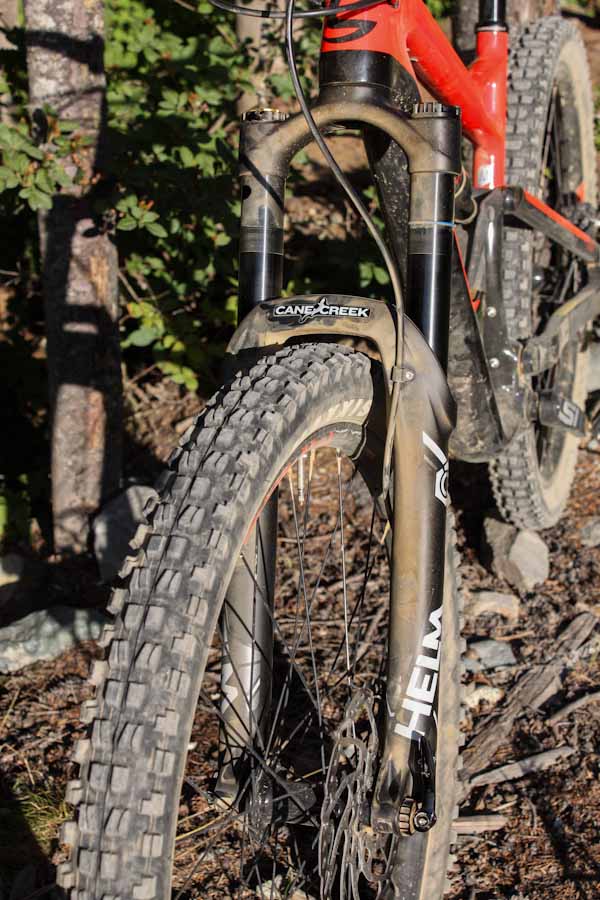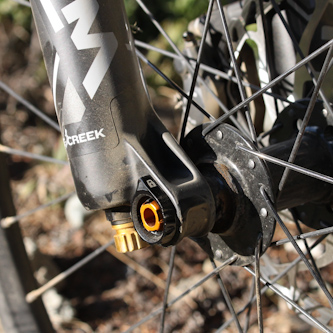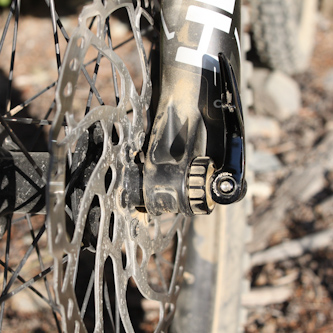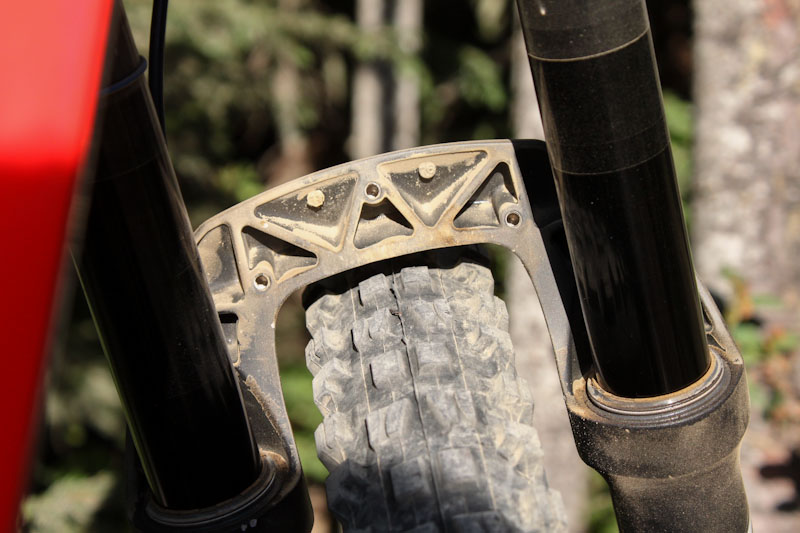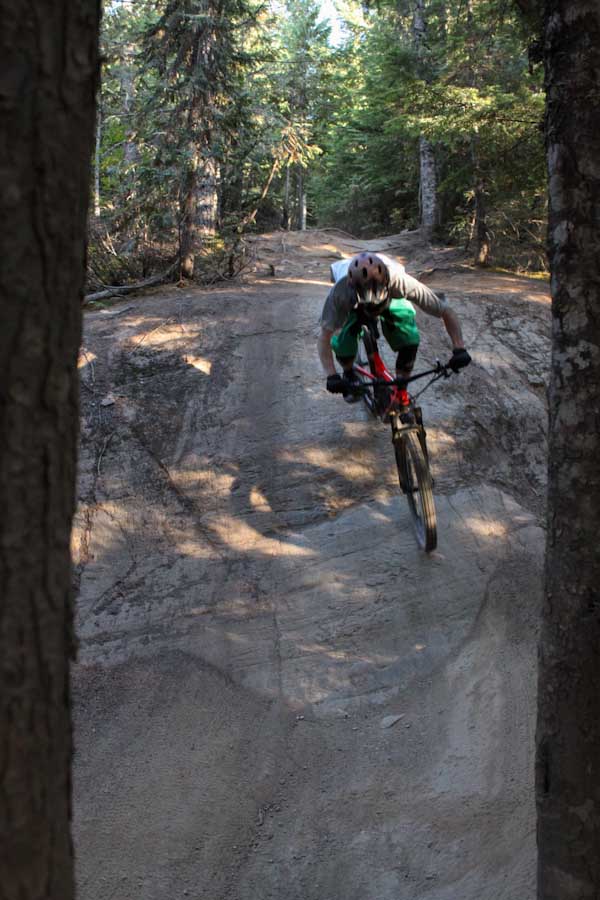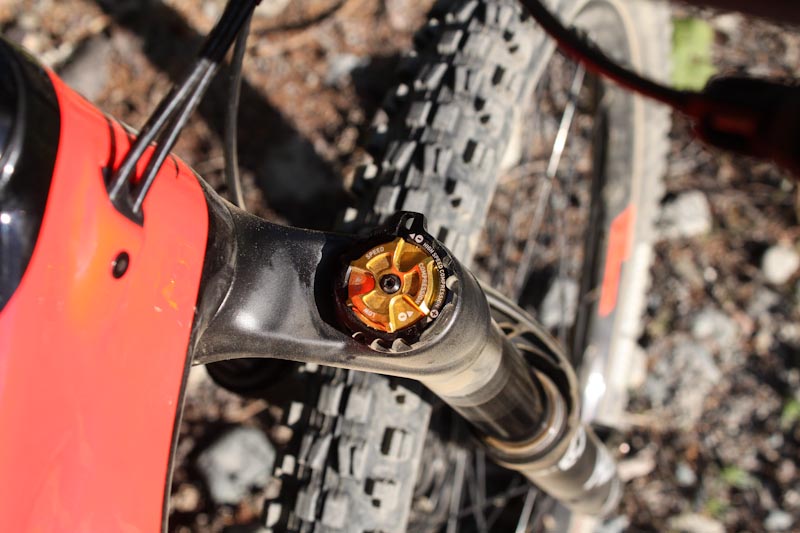After many years of focusing on rear shocks only, Cane Creek finally broke into the fork market with the Helm Air. And before the initial surprise even wore off, they’ve gone ahead and developed a new coil version for those who want the lively ride of a good ol’ spring.
While the new Helm Coil is officially launching at Eurobike, I got a chance to take one for a spin during Crankworx Whistler. My test model was hidden under a Helm Air’s chassis, so no one got wise to what was inside. The production Helm Coils have been given a distinctly different appearance.
The Helm Coil offers 160mm of travel, which is adjustable down to 130mm in 10mm increments. The Coil fork features rebound plus High and Low speed compression controls. The Helms will ship with a 55lbs spring, which is intended for riders between 160-180lbs. Currently Cane Creek plans to offer a 45lbs spring for lightweights weighing 130-160lbs and a 65lbs spring for riders up to 230lbs. These numbers are just general guidelines, as precise fork tuning also takes the rider’s preference for compression feel, sag and ride height into account.
The Helm Coil weighs in at 2250g, which is about 200g heavier than the Air version. After riding it, I’d say those who prefer the coil’s inherently active feel might be OK with the weight compromise…
Rather than threading in, Cane Creek’s D-Loc axle slips into a set point to prevent over tightening, then a locking latch on the other side secures it in place. An adjusting ring allows you to set the cam lever’s tension.
The Helm Coil will accept tires up to 2.6” wide. The three threaded holes in the backside of the fork crown may be a hint towards a certain popular bolt-on accessory that’s possibly in development…
Ride impressions:
As soon as we dropped in I was enjoying the supple and responsive feel of the Helm Coil. Small bump compliance was excellent; riding over smoother sections of trail was practically like cruising down the street.
Big bump absorption was also impressive, whether taking sharp hits or landing jumps the action was always smooth and linear. The fork didn’t quite make berm holes and brake bumps disappear, but it handled them admirably. Despite the nightmarish conditions of the mid-Crankworx Whistler bike park, I didn’t notice any lack of stiffness from the Helm’s chassis.
Cane Creek’s Sam Anderson mentioned that the coil fork rides a bit higher in its mid-stroke than the air version, which helps keeps your front end up while you’re creeping down steep rocks or chutes. The bike I was riding originally had a 170mm air fork on it, yet on the trail the shorter 160mm Helm Coil didn’t feel like it skewed the geometry much.
My only issue with the Helm Coil is that I am on the light end of its intended rider weight range. Officially Cane Creek says riders under 130lbs would be better served by their air models, but I am about 140lbs and I was getting about 80% travel from the coil Helm. Consequently I wound up riding with the high and low speed compression knobs wide open, so I can’t really comment on how those settings affect the fork’s performance.
Apparently the company has been toying with tons of different weight springs throughout development, so if demand existed it wouldn’t be much trouble for them to offer wider options.
